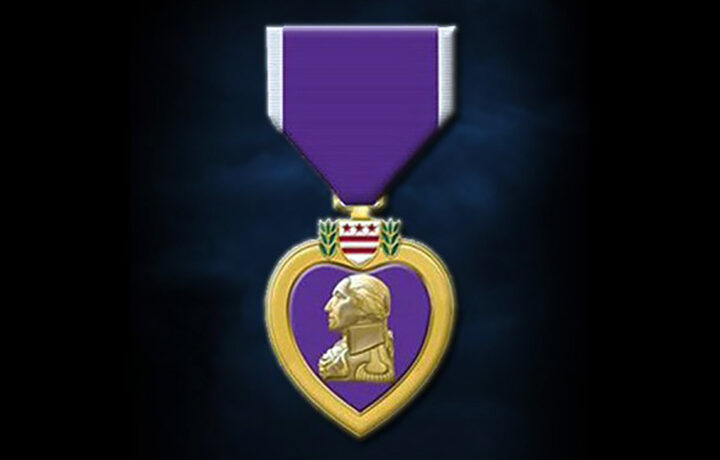The whole month of August is meant to honor the brave men and women who were wounded or killed in combat, but August 7 serves explicitly to commemorate the Purple Heart. It was on this day in 1782 that General George Washington, acting as commander-in-chief of the Continental Army, commissioned the Badge of Military Merit. It was a purple, heart-shaped piece of silk bound with a thin edge of silver, with the word “merit” embroidered in silver across its face. It was awarded to those who had “given of his blood in the defense of his homeland.”
Just three soldiers actually received it.
Today, it is easily one of the most recognizable American medals. Everyone knows what the Purple Heart means, but few know the origins. There is also as much “misinformation” about it as fact. A commonly told story is that some Civil War soldiers earned as many as five Purple Hearts, yet that is unlikely, since the award was not in use at that time.
The Modern Purple Heart
The original order fell into disuse, and it wasn’t until after the First World War that there were calls to see it reestablished. In October of 1927, Army Chief of Staff General Charles Pelot Summerall directed that a bill be sent to Congress to revive the Badge of Military Merit. The bill was withdrawn, but Summerall’s successor, General Douglas MacArthur, reopened the work and oversaw the preparation of a redesigned medal in time for the bicentennial of George Washington’s birth.
Elizabeth Will, an Army heraldic specialist in the Office of the Quartermaster General, can be credited with the design that we know today. The Commission of Fine Arts solicited plaster models from three sculptors and eventually selected the one of John R. Sinnock of the Philadelphia Mint in 1931. And by Executive Order of the President of the United States, the Purple Heart was revived on the 200th anniversary of the birth of George Washington.
As the Purple Heart did not exist before February 22, 1932, it was authorized for soldiers, upon their request, who had been awarded the Meritorious Service Citation Certificate, Army Wound Ribbon, or were authorized to wear Wound Chevrons after April 5, 1917. Fittingly, the first Purple Heart was awarded to MacArthur.
It is worth noting that in the opening days of World War II, before the establishment of the Legion of Merit, the Purple Heart was awarded for wounds received in action against the enemy and also for meritorious performance of duty. By Executive Order 9277, dated December 3, 1942, the decoration was extended to all services and was to be awarded only for wounds received.
The Purple Heart is awarded in the name of the President of the United States to any member of the Armed Forces of the United States who, while serving under competent authority in any capacity with one of the U.S. Armed Forces after April 5, 1917, has been wounded or killed, or who has died after being wounded.
The Physical Medal
The Purple Heart award is a heart-shaped medal within a gold border. It is 1 3/8 inches wide and contains the profile of General George Washington.
Above the heart appears a shield of the coat of arms of George Washington, with a white shield with two red bars and three red stars in chief. To each side of the shield are sprays of green leaves. The reverse consists of a raised bronze heart with the words “For Military Merit” below the coats of arms and leaves. The ribbon is 1 3/8 inches wide and consists of white stripes flanking a purple band.
Key Purple Heart Factoids:
- The Purple Heart was originally only issued during official “wartime.” Still, after March 28, 1973, it is now authorized for any military operations while serving outside the territory of the United States as part of a peacekeeping force.
- During World War II, nearly 500,000 Purple Heart medals were reportedly manufactured in anticipation of the estimated casualties for the planned Allied invasion of Japan. As of 2003, there were still 120,000 of these Purple Heart medals in stock.
- Famous recipients of the Purple Heart include actors Charles Bronson, Lee Marvin, Charles Durning, and Audie Murphy, as well as director Oliver Stone and writer Kurt Vonnegut, Jr.
- Seven men have been awarded the Purple Heart a total of eight times.




